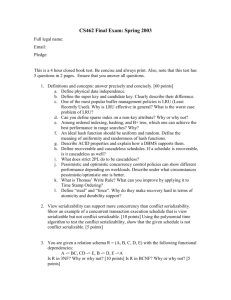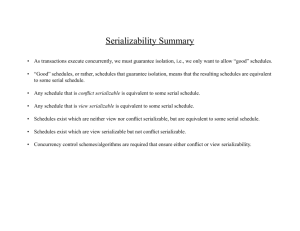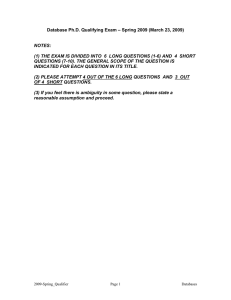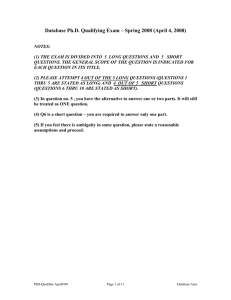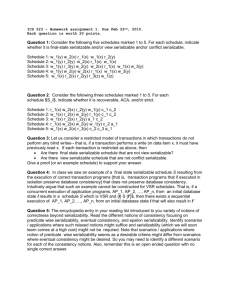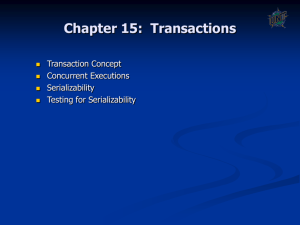Tips for the CS462 Final Exam, Spring 2003
advertisement
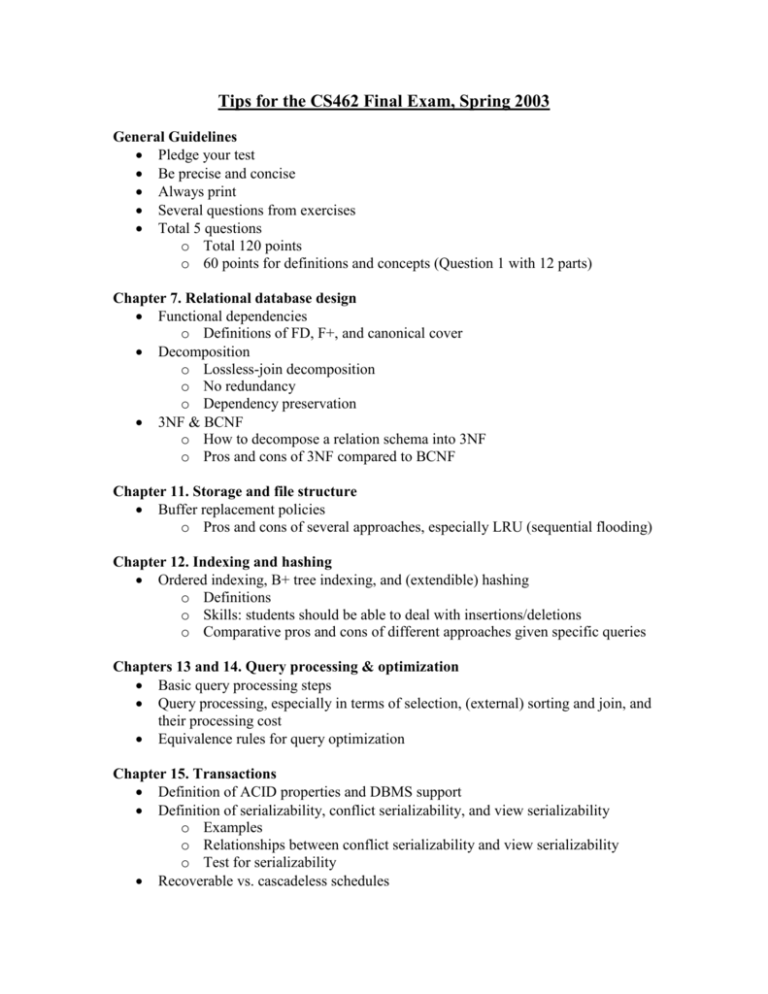
Tips for the CS462 Final Exam, Spring 2003 General Guidelines Pledge your test Be precise and concise Always print Several questions from exercises Total 5 questions o Total 120 points o 60 points for definitions and concepts (Question 1 with 12 parts) Chapter 7. Relational database design Functional dependencies o Definitions of FD, F+, and canonical cover Decomposition o Lossless-join decomposition o No redundancy o Dependency preservation 3NF & BCNF o How to decompose a relation schema into 3NF o Pros and cons of 3NF compared to BCNF Chapter 11. Storage and file structure Buffer replacement policies o Pros and cons of several approaches, especially LRU (sequential flooding) Chapter 12. Indexing and hashing Ordered indexing, B+ tree indexing, and (extendible) hashing o Definitions o Skills: students should be able to deal with insertions/deletions o Comparative pros and cons of different approaches given specific queries Chapters 13 and 14. Query processing & optimization Basic query processing steps Query processing, especially in terms of selection, (external) sorting and join, and their processing cost Equivalence rules for query optimization Chapter 15. Transactions Definition of ACID properties and DBMS support Definition of serializability, conflict serializability, and view serializability o Examples o Relationships between conflict serializability and view serializability o Test for serializability Recoverable vs. cascadeless schedules Chapter 16. Concurrency control 2PL and its variations o Benefits of strict 2PL: cascadeless, why? Timestamp ordering Optimistic concurrency control Phantom phenomenon Chapter 17. Database recovery Atomicity and durability support o Why hard? Write Ahead Log (WAL) o Why necessary? Checkpointing o Definition o Cost/benefit Recovery procedure o Given WAL and checkpointing, how does a DBMS recover from a system crash? Miscellaneous Important concepts covered in the midterm exam List of in-class exercise and homework questions 7.2 and a variation (Is R in 3NF?), 7.11, 7.12, 7.13, 7.18, 7.25, 7.26 11.3, 11.6, 11.14 12.1, 12.2, 12.4, 12.5.b, 12.7.a-e (Start with the tree you have got from 12.5.b) 13.1, 13.2, 13.5.a-c 14.1 – 14.4 15.2, 15.3, 15.4, 15.8, 15.10 16.2 – 16.4, 16.24, 16.27 17.4, 17.5
